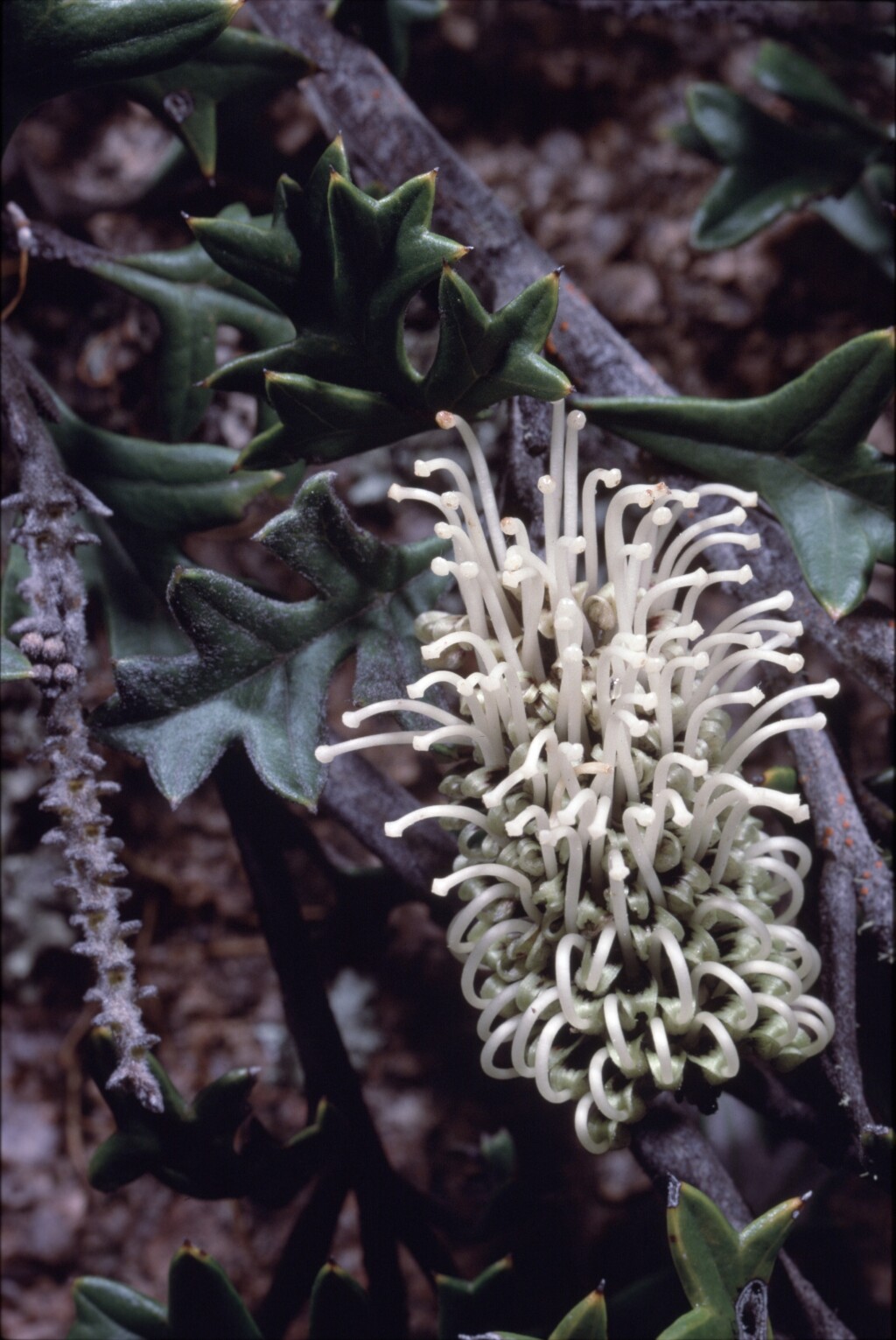Grevillea willisii
R.V.Sm. & McGill Omeo GrevilleaSpreading to erect shrub, 1–4.5 m high, to 3 m wide. Leaves 2.5–13.5 cm long, 2–6.5 cm wide, 5–11(–19)-partite, primary lobes simple or 3–5-fid, rarely some tertiary division on lower lobes; ultimate lobes oblong to narrowly triangular, 0.5–2.5 cm long, 3–17 mm wide; lower surface densely woolly-tomentose; margin shortly recurved. Conflorescences terminal, erect, simple, secund, (1–)3–8.5 cm long; rachis woolly-tomentose; perianth cream, outer surface tomentose, inner surface glabrous; pistil 11–18 mm long, ovary stipitate, subsericeous to subvillous, style cream, glabrous, pollen presenter oblique. Fruits softly tomentose with purplish-brown markings. Flowers Sep.–Jan.
GipP, NIS, HNF, VAlp. Restricted to the catchments of the Mitta Mitta River and Nariel Creek where growing in rocky situations near streams, on granite.
There are 2 forms. The shorter-leaved form has leaves 2.5–6.5 cm long with 5–11 primary lobes, and conflorescences 3–5.5 cm long; it occurs on the catchment of the Mitta Mitta River and its tributaries in the Omeo area. The longer-leaved form, with leaves 7–14 cm long with 9–19 primary lobes, and conflorescences 8–9 cm long is known from only 2 collections near Corryong (Nariel Creek and Wheelers Creek).
The species is very closely related to Grevillea pachylostyla, which is of smaller habit, has smaller leaves, a less secund (or cylindric) and fewer-flowered conflorescence, and more robust styles which redden after anthesis. Populations morphologically intermediate between the 2 taxa are known from Mt Stradbroke and from east of Gelantipy.
Makinson, R.O. (1996). Grevillea. In: Walsh, N.G.; Entwisle, T.J., Flora of Victoria Vol. 3, Dicotyledons Winteraceae to Myrtaceae, pp. 845–870. Inkata Press, Melbourne.
 Spinning
Spinning

